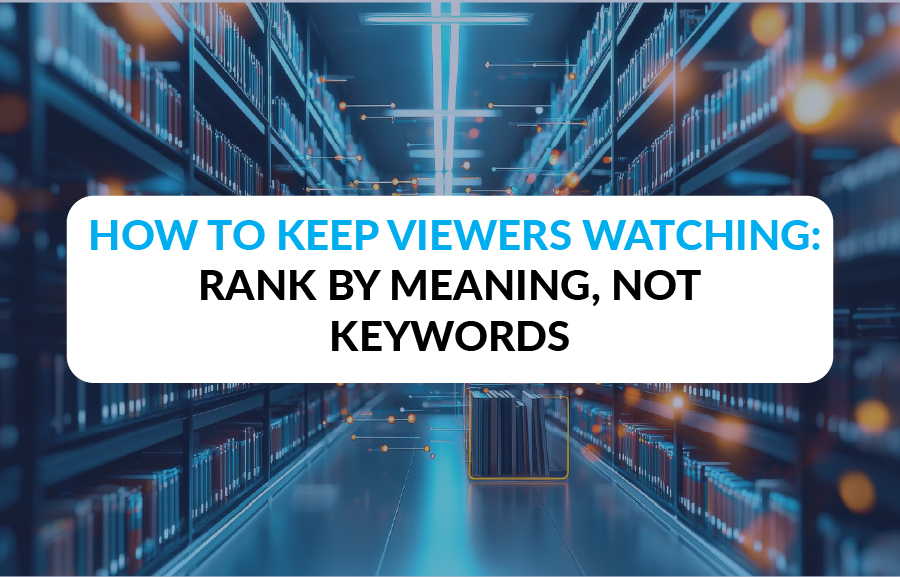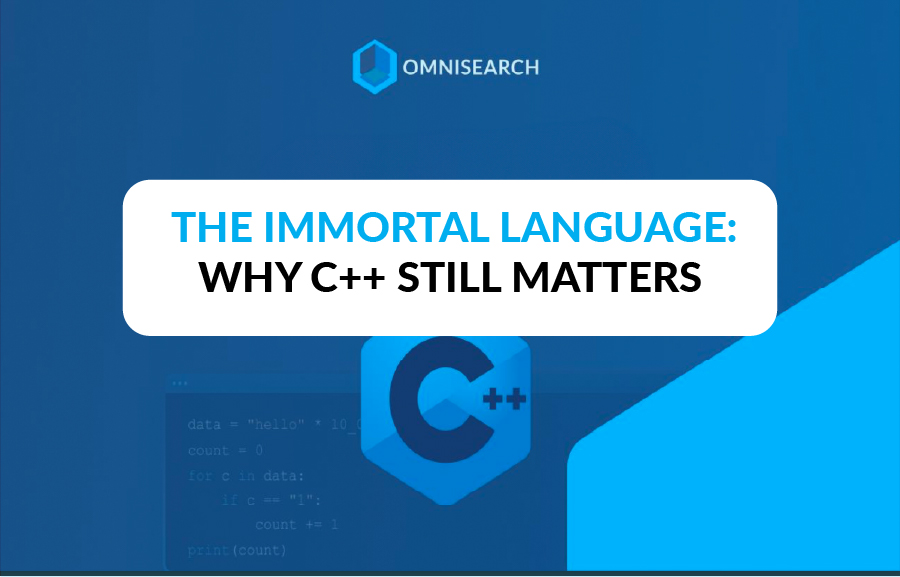How Visual Search is Changing the Game
No items found.
Published:
August 20, 2024
Topic:
Deep Dive

In recent years, video has been largely introduced into media platforms and online portals. Correspondingly, the need for visual search has become more pressing. As a result of this trend, media and e-commerce portals have mostly begun the adoption of visual search as a key technology that improves their overall consumer experiences. In this article, we will explain in detail what visual search is, and how it can be utilized in specific business scenarios.
What is Visual Search?
Visual search is the capability that enables users to use images in their search queries when looking for a diverse pool of content. Visual search is based on AI (artificial intelligence) that determines the image’s context and content, thus enabling the search engine to find relevant results. Visual search provides a better user experience in terms of using images instead of the traditional text-based search.
The big tech players, such as Google, Amazon, Pinterest, and Microsoft, have already implemented this visual search functionality. Similarly, visual search has been applied in e-commerce, media portals, social media, and other online platforms. Users can upload their own images in Google search, and the search results will show related contents including images, products, and websites featuring similar images.
The visual search engine can find the famous artist who painted the image that you have uploaded, and it can also identify the type of fruit that is pictured in the photograph. On e-commerce sites, uploading the image of a shoe would display categorically similar items within an online store’s inventory, but the accuracy may not be perfect. Thus, the visual search feature provides a richer and more efficient user experience. However, the occasional inaccuracies of these searches demonstrate the need for further improvements.
Why is it a game changer?
Visual search tools can not only recognize product types (categories), but also additional details including the item’s physical features (e.g. shape, texture, background, and etc). This enables retailers to provide search results of higher accuracy that match exactly what shoppers are looking for, even if the item requires detailed examination.
Advanced visual search tools also perform object detection and identification in an image, and it can enhance an e-commerce platform’s search options - in finding the right product. Other capabilities include smart object cropping, so that buyers can focus on the product shown in the image. Furthermore, visual AI technology enables several other features that enhance content discovery and simplifies core backend processes such as tagging, inventory management, marketing, and sales.
This recognition technology can also be used to assign tags to particular spots within videos and give those sections an attribute (specific descriptions). Automating this process provides content metadata, and creates a robust infrastructure for both searching and marketing. Combined with other technologies like natural language processing (NLP), visual AI can even improve the accuracy of text-based search queries, and provide more relevant results (enabled by the visual-AI tagging).

Successful use cases for visual search
There are many successful applications of visual search - and the pioneers in the field are mostly the big players.
- Google Lens in Media Portals. Google Lens is Alphabet’s latest image recognition technology and app. It allows users to use real-time images as well as images on the web to find relevant information. Google Lens helps users to translate text in real-time, identify plants, animals, and products. This enables companies to create images and connect offline with online experiences. For example, mobile users can use Google Lens to scan the menu in a restaurant to find related reviews of a specific dish. Traditional established media like the New York Times also recently experimented with Google Lens by printing a scannable area for users to unlock; in return, a bonus podcast is added into the scanned user’s inventory.
- Getty Images is the renowned British-American visual media company known for the supplying of stock images, editorial photography, videos, and music for both businesses and consumers. It has a library of more than 470 million images, videos, and media files, and the company provides flexible image subscription plans. Getty’s libraries are fully indexed, making it easy to find the exact asset you need. Each asset's name, description, metadata, and many other details are instantly full-text searchable. Getty’s search system is also case insensitive (except for OR and AND search operators), meaning LOGO and logo will return the same results.
- Captioning/Searching Instagram Videos - Instagram is one of Meta’s top social media platforms and very suitable for the visual representation of many businesses. Most notably, Instagram is predominantly picture-centric. It uses videos and photos as the primary mediums;likwise, Instagram’s short video component (Reels) can be used by businesses in various promotional campaigns. When watching videos on mobile devices, videos with subtitles will almost always win a bigger audience than ones without because viewers can watch them discreetly in silence; this is the reason why it is so important to insert subtitles into your videos. Additionally, tagging the video will enable faster and smarter navigation and search for specific spots inside the video; this requires both professional software and endless patience. The same applies to timing: You will need to look at where to place your tags for search or marketing purposes. Once you complete the SRT file, it can then be uploaded and used on Instagram for display. More info on captioning can be found here.
- Online Shopping on Pinterest/Snapchat via Images. Pinterest’s visual search feature allows users to shop for items that are found within an image. Users can navigate from finding a product on the Pinterest site to checking-out on the retailer’s store in just seconds. Pinterest’s latest addition, Lens (not the same as Google Lens), allows users to upload an image directly from their camera to find the exact product online. It enables a lot more e-commercial marketing opportunities for the platform. Pinterest is one of the world’s largest visual shopping networks. There are more than 2 billion searches on Pinterest every month, and one third of them comes from visual searches (shopping-related).
Snapchat (together with Amazon) enables the users to use the camera for scanning a physical object or barcode, and it will display a card showing that item and similar ones along with their title, price, thumbnail image, average review score, and Amazon availability.

What Benefits can Omnisearch Provide to Media Houses?
Today, videos are the main medium that the younger generation (Gen Z and Alpha) uses for when learning and socializing. Users spend a significant amount of time every day watching online videos, and videos are by far the best medium that you can use to present news and various other content. If you truly intend to get a greater and more immersive experience for your viewers, then you should definitely consider maximizing the use of videos on your portal. As a matter of fact, it is quite easy to do that, and the results will pay off exponentially in the long run.
Omnisearch provides closed captioning services, especially for broadcasting media companies like CNN and BBC as well as other traditional media companies. Implementing automated captions helps people consume media content more effectively. With Omnisearch, you can utilize our advanced search functionality to find the exact video you need or navigate your massive database using filters such as topics, dates, tags, prices, and many more. Additionally, when you search for specific files, Omnisearch will automatically tell you the relevance of the files to your specific search inquiry. This helps make the entire searching process quick and easy, and it can substantially reduce the time you need to search and find exactly what you need.
A significant benefit of using Omnisearch is to promote accessibility that caters to a diverse audience. For instance, there exists a considerable number of residents within the United States that speak little or no English at all. This poses a unique opportunity. Specifically, media companies can resolve this issue through an all-in-one app that automates captions and provides direct translation services. Moreover, Omni can also substantially improve experiences for viewers who have difficulties in hearing or prefer audios instead. With non-speech (text) descriptions, alongside the dialogues, audiences will be able to understand literally everything that is going on within the video.
To conclude, online media can make great use of Omnisearch to streamline and enhance their workflow. Whether you are managing multiple shows, segments, or an entire network, captioning should be the least of your problems. Omnisearch provides accurate captioning for any of your content and makes it easy to meet FCC compliance on top of your specific needs. It also allows you to easily search and navigate through your internal files so you can find the exact content you need whenever you need them. Omnisearch offers an advanced API making it simple for you to integrate Omnisearch into your own site. Please feel free to contact us for a quick demo and learn more about how to improve your online media platform.






